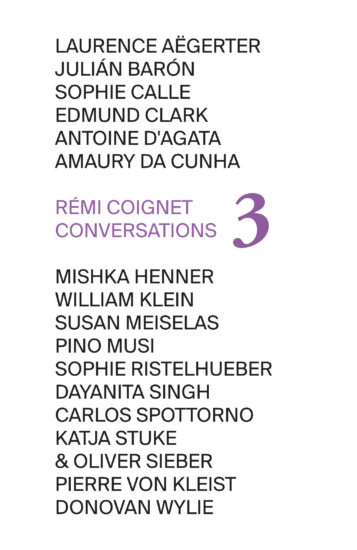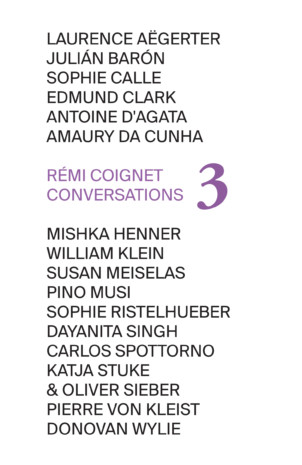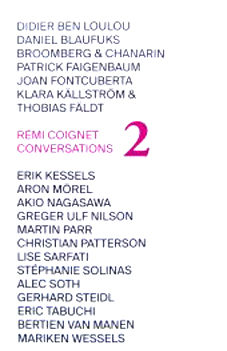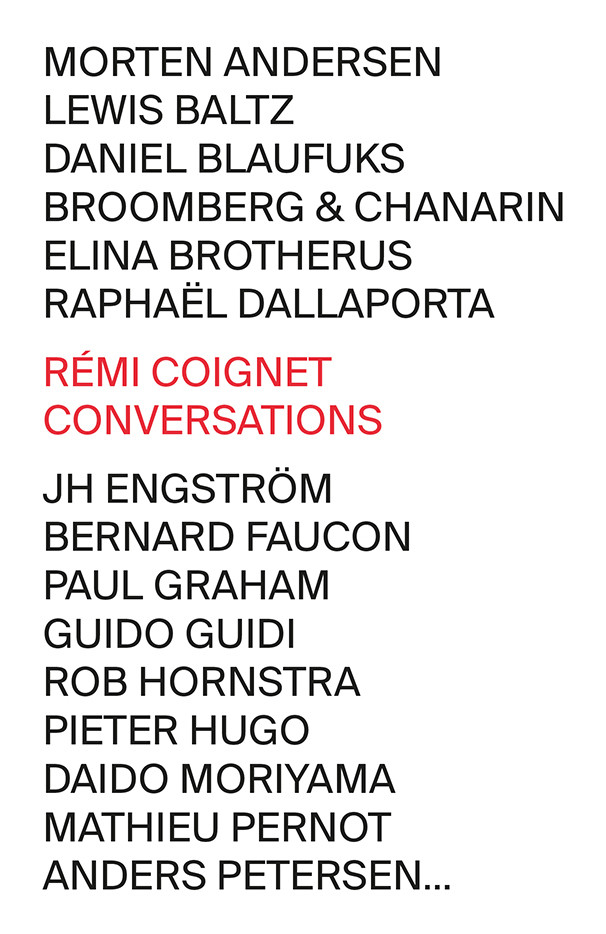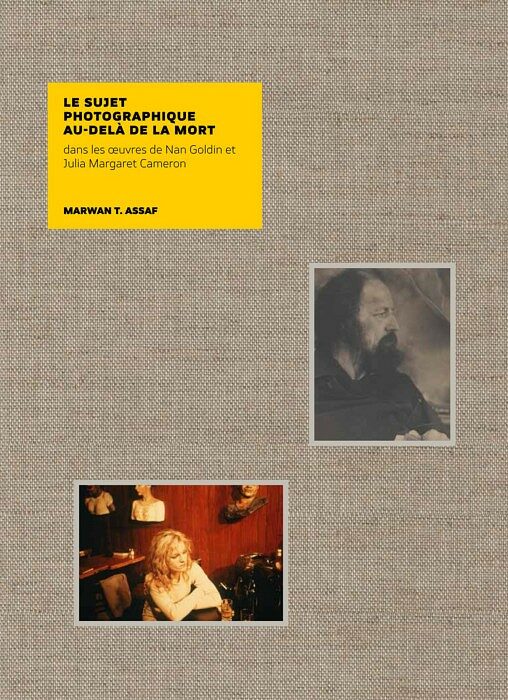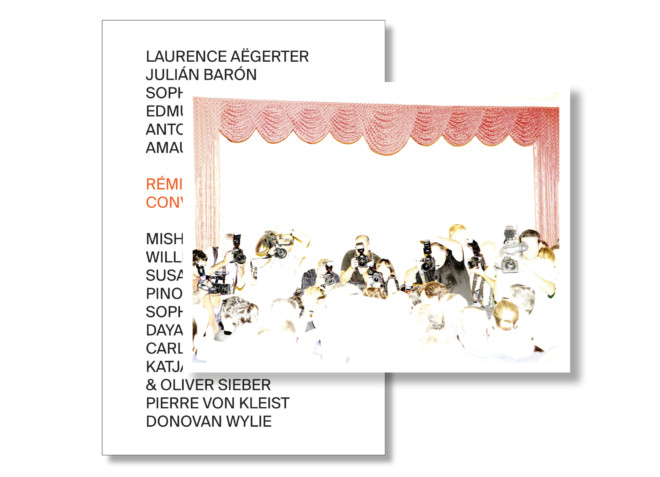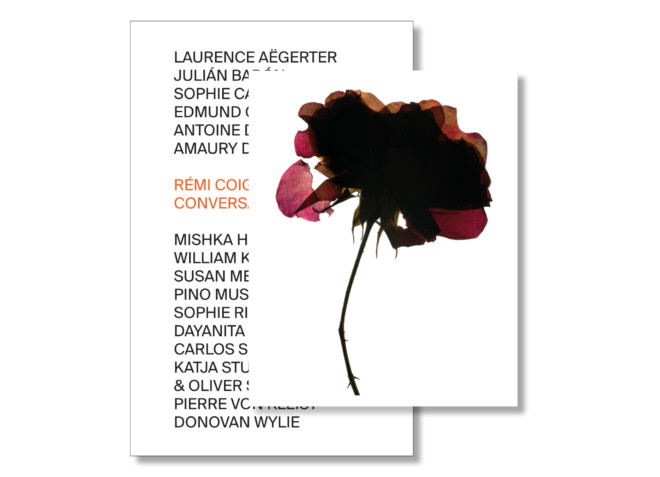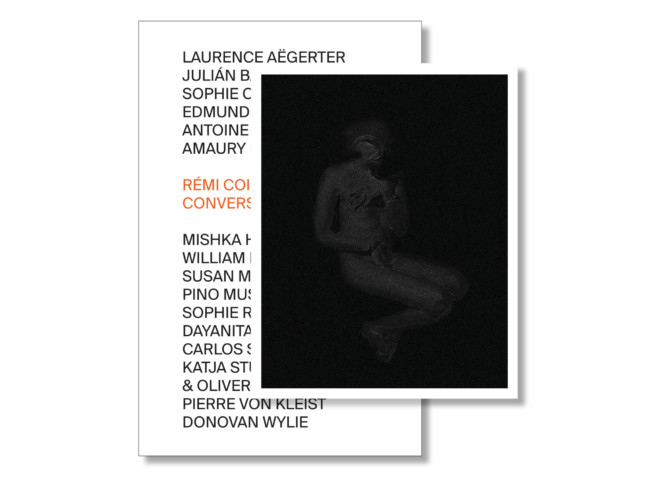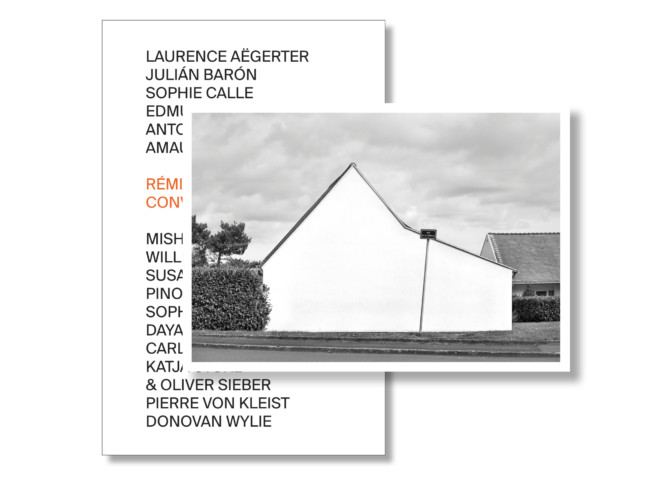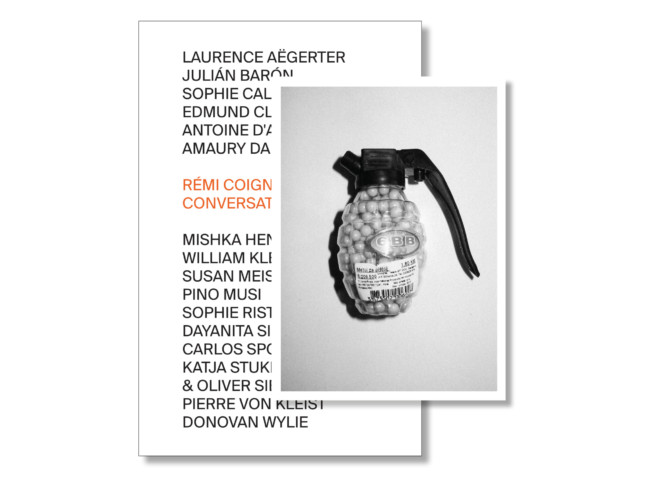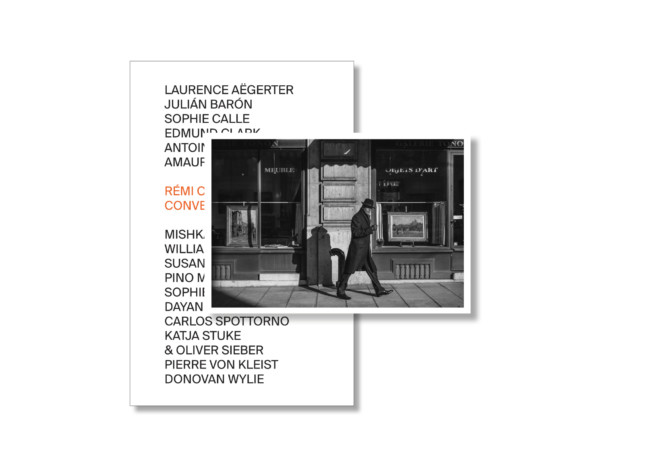Conversations, Vol.3
Rémi Coignet
Conversations 3
Conversations is a book of interviews with contemporary photographers, conducted by Rémi Coignet, photo book critic. Since 2014, when the first volume was published, the aim is to give a prominent place to photographers, so that they can make their voices heard in the field of publishing, often forgotten in favour of those of critics, journalists and curators.
Photographers, publishers and graphic designers are invited to revisit their work and reveal their intentions. In the course of the interviews, a geography of contemporary photography is sketched out, following on from two previous volumes, Conversations, published in 2015, and Conversations 2, published in 2016.
This third volume focuses on photographers who are particularly interested in editing and editorial work. Photographers thus fully discuss their editorial project, their vision of the photo book and its importance in their photographic practice. Rémi Coignet also interviews photo publishers in order to make their voices heard in a sector that is under-represented.
Excerpt from an interview with Sophie Calle
Rémi Coignet: Most people’s lives are very mundane. I have the feeling that very often you slip a grain of sand into banality to see if something interesting is going to happen. I think for example of Where and when? or following a man to Venice…
Sophie Calle : Yes, but at the same time I say banal things. A man who leaves, a mother who dies, break-ups. But there are also all the works that are not about me: a stolen painting, a blind man. Everyone in this room has been left once, received a break-up letter or a phone call or a text message now…
Excerpt from an interview with Antoine d’Agata
Rémi Coignet: It seems to me that you have written somewhere that you live what you photograph, and photograph what you live.
Antoine d’Agata: Yes, this relationship is complex, impure. There is no possible balance. At no time can we reach a balance, a balance, a harmony. Always life or photography takes over. I am constantly struggling to find this impossible balance. This very attempt is worth living. I think it makes the experience more intense because the photographic distance allows an intelligence of the lived moment that makes it deeper, more ambiguous.
Excerpt from an interview with William Klein
Rémi Coignet: From this first book, typography plays an essential role, and it will be in all your books, as in the credits of your films. What is its role for you?
William Klein: Painting at the time was at the dawn of Pop and typography was essential. There are even some photographs that I deliberately designed that way. For one day, I was going to skim the typography of New York City.
Conversations with :
LAURENCE AËGERTER
JULIAN BARON
SOPHIE CALLE
EDMUND CLARK
ANTOINE D’AGATA
AMAURY DA CUNHA
MISHKA HENNER
WILLIAM KLEIN
SUSAN MEISELAS
PINO MUSI
SOPHIE RISTELHUEBER
DAYANITA SINGH
CARLOS SPORTTORNO
KAJTA STUKE &
OLIVER SIEBER
PIERRE VON KLEIST
DONOVAN WYLIE
The press talks about it

